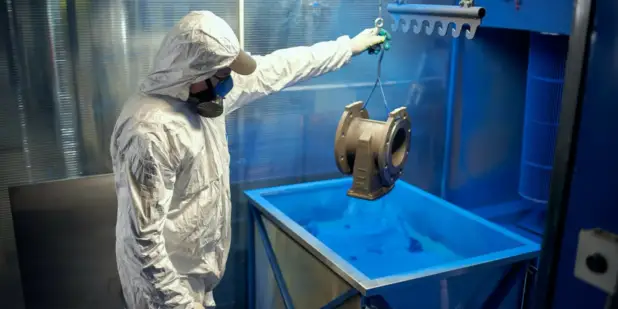When selecting paint and coating materials for outdoor work, one often sees the manufacturer's indicated lifespan of the coating on the packaging - 5, 10, or 15 years. What does this mean and how can it be verified? In our article, we will report on how these tests are conducted.
Tests of Paint and Coating Materials
Paint and coating materials have long been an integral part of our daily lives. However, their function is not limited to decorative purposes. They play a key role in various industries by protecting and enhancing surfaces and creating robust and durable coatings.
Tests for Resistance to Solar Radiation
When using paint and coating applications, it is important to ensure that they can withstand various climatic conditions. For this purpose, accelerated climatic tests for resistance to the following influences are conducted at the testing center:
- Cold
- Heat
- Salt mist
- Humidity
- Sulfur dioxide
- Solar radiation
Based on the test results, the expected lifespan of the paint and coating is determined, which is the estimated durability of the coating under operating conditions during which it retains the specified properties, or the time until the first comprehensive repair of the paint and coating.
The main normative document governing the conduct of these tests is GOST 9.401-2018.
SGR Registration for Paint and Coating Materials
For the EAC approval of paint and coating materials in the EAEU member states, State Registration, also known as SGR registration, is typically conducted.
The legal regulations regarding State Registration, also referred to as SGR registration or SGR certification, were enacted in 2010. The SGR certification is considered the successor to the Hygienic EAC certification. State Registration can be applied for by the importer, the manufacturer, or their representative in the EAEU states. The SGR certification is equally valid in all countries of the Eurasian Economic Union.
Conducting Tests for Coating Materials
Since the degradation of coatings occurs over an extended period, testing centers apply cycles to the samples to accelerate results, simulating changes in conditions over several months or years.
These include temperature fluctuations, humidity variations, and solar radiation. The assessment of exposure is based on one or more indicators.
In a low-temperature chamber, the sample is frozen and then thawed over several cycles. The high-temperature chamber heats and cools the material to simulate its behavior during the hot season.
The salt mist chamber simulates the effect of marine air with a water-salt mixture. These tests allow for the collection of data on the corrosion properties of protective materials and the corrosion resistance of coatings in a short time.
The sulfur gas chamber models an aggressive industrial atmosphere. In the chamber, sulfuric acid vapors form under the influence of moisture and sulfur gas, which have a destructive effect on the coating.
In the solar radiation chamber, tests for resistance to solar radiation are conducted. Tests in such a chamber allow for the simulation of the multi-year behavior of materials under the influence of solar radiation.
The tests of paint and coating materials are conducted to assess product quality, verify durability and expected lifespan, as well as to test newly developed and innovative products.


